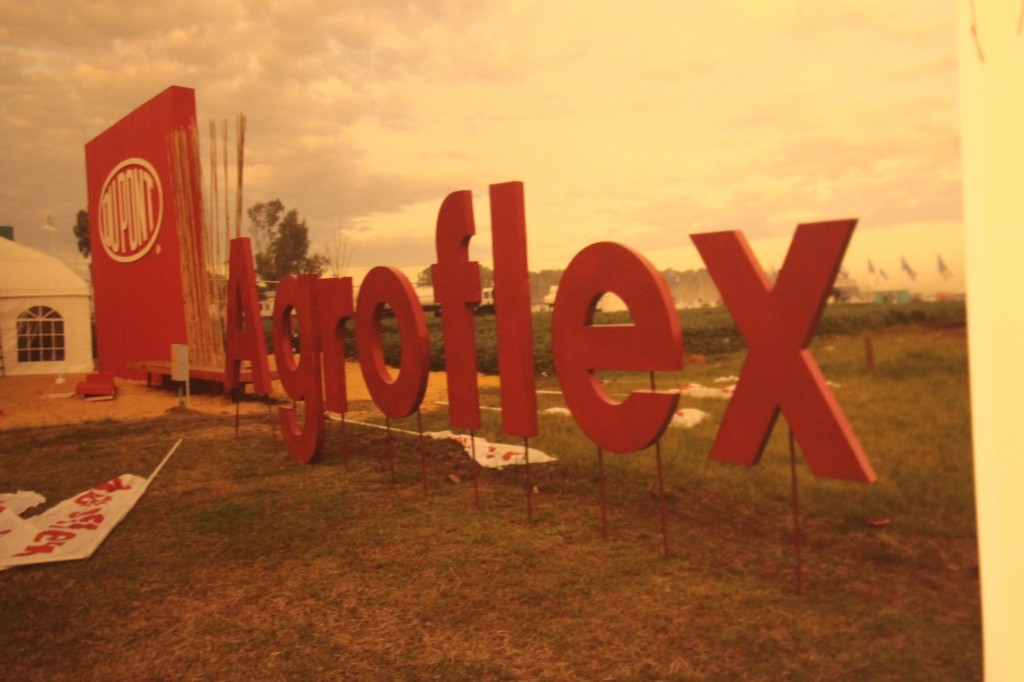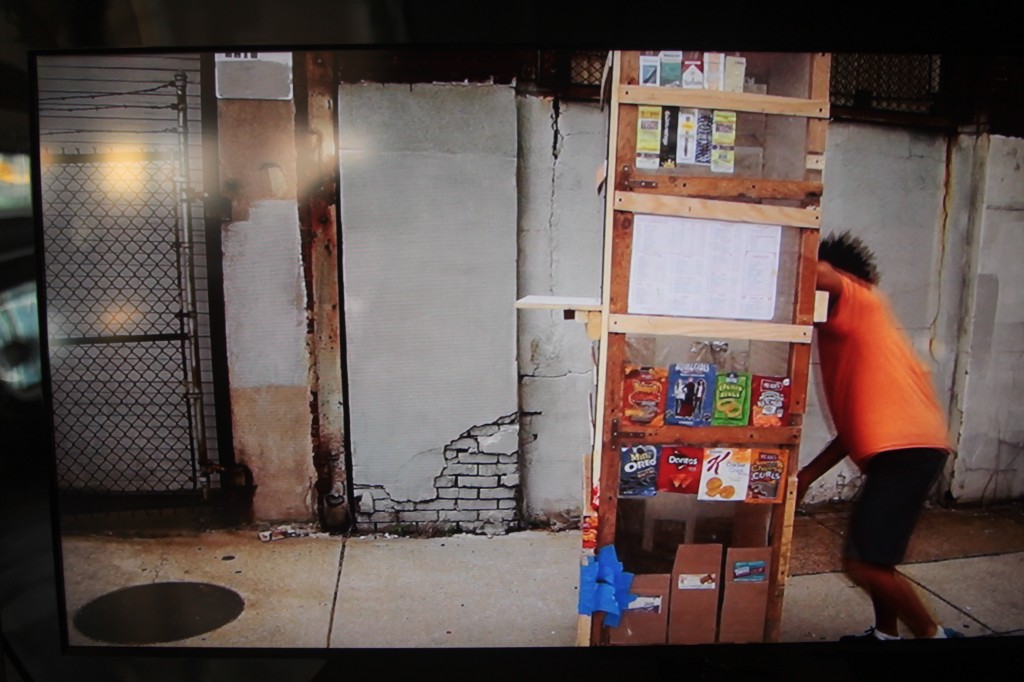Rowan's "How Food Moves" Exhibit Invites Viewers to Think Critically about Food Systems

I don’t know about you, but I often rely on quotes by famous people and great thinkers to help me distill down an immense concept into a few well-chosen words. And, when I searched for wise phrases about art, I found pages and pages to choose from. But it is this one – “Art is not what you see, but what you make others see” – attributed to the Impressionist master Edgar Degas, that helped me to clarify my overall impressions about “How Food Moves: Edible Logistics," the exhibition currently on view through May 27 at the Rowan University Art Gallery.
“How Food Moves” is the brainchild of guest curator Daniel Tucker, an artist, writer, organizer and Graduate Program Director in Social and Studio Art at Moore College in Philadelphia. From his longstanding interest in and natural curiosity about food systems has come a book ("Farm Together Now," co-authored with Amy Franceschini and highly praised by food and culture guru, Michael Pollan), an event series on food and economy at the Kentucky Museum of Art & Craft, a feature-length video essay and a traveling exhibition and event series titled “Organize Your Own: The Politics and Poetics of Self-Determination Movements."
His idea was to bring together a group of artists whose methods are primarily driven by research and investigation, but whose work takes on a variety of forms, and to ask each one to produce a visual representation of, well, of how food moves. Or to fine tune that a bit, to make us “see” some aspect of the complex ways in which the U.S. food supply travels from its point of origin (i.e. the farm) to its destination (i.e. your dinner table).

HFM - Claire Pentecost - ExpoChacra Agricultural Trade Show, Argentina
“It can be a massive, impersonal system,” Tucker said.
In selecting the artists to participate in the exhibition, Tucker went to people he knew and had worked with before as well as others with whom he didn’t have an existing relationship. “It’s good to have both,” he said, “the familiar and the surprising.”
“Some of the artists had completed projects that I knew would fit well,” Tucker said, “and others were willing to develop new work specifically for the show.”
And, although the artists do share the attitude that information gathering is a critical part of their creative process, the end results are as different as can be. The works, too, are diverse and cover a wide range of mediums and presentation styles.
“The research does not have to end up looking the same.” Tucker said.
In addition to talking with Tucker by phone about the show, I recently visited the Art Gallery and was treated to a work-by-work tour of the exhibition by Mary Salvante, Rowan University Art Gallery and Exhibitions Program Director.
This is Salvante’s seventh year as director, and she is clearly passionate about the gallery and its future.
“It is extremely important that we continue to explore new directions,” she said, “and look for ways to present broader themes. This year, I wanted to bring in artists with an activist sensibility.”

HFM - HFM - Amber Arts Initiative - Corner Store Take Out Stories
“How Food Moves” is an excellent example of that approach, as is last September’s show, “A Sharp Divide,” which featured New York artist Dread Scott.
Scott’s works in “A Sharp Divide” explored what Salvante described as the ‘racial disparity’ in the American criminal justice system and its impact on minority communities. And, in “How Food Moves," the topic is what Salvante refers to as ‘food justice.'
The exhibition also features a comprehensive companion booklet put together by Megan Bucknum Ferrigno, a part-time faculty member of Rowan University’s Department of Geography, Planning and Sustainability. This printed piece includes details about the participants and their project narratives, as well as research and texts on the US food supply chain.
Instead of trying to offer a wide overview, the booklet uses as a reference point a single product – the blueberry – and a single place – New Jersey farms – to break down into more digestible pieces some of the exhibition’s weightier issues.
You’re not wrong if you think that “How Food Moves” takes on some serious subject matter. It does. But, as both Salvante and Tucker pointed out to me, art is up to the challenge.
“Artists can often raise questions or make points that the information and data alone can’t,” Salvante said.
And, although we can’t expect art to do all the heavy lifting, it can certainly be a powerful tool to promote communication and action.
“An exhibition like this,” Tucker said, “reminds me that people who are thoughtful about image making and storytelling have a huge role to play.”
How Food Moves: Edible Logistics Rowan University Art Gallery March 27 – May 27, 2017
Guest Curator: Daniel Tucker
Artists: Amber Art & Design Ryan Griffis & Sarah Ross Brian Holmes Otabenga Jones & Associates Cynthia Main Claire Pentecost Philly Stake Stephanie Rothenberg Candice Smith with Freedom Arts Kristen Neville Taylor
Booklet: Rowan’s School of Geography and Environment – Professor Megan Bucknum Ferrigno; contributions from Professors Jennifer Kitson and Charles McGlynn


